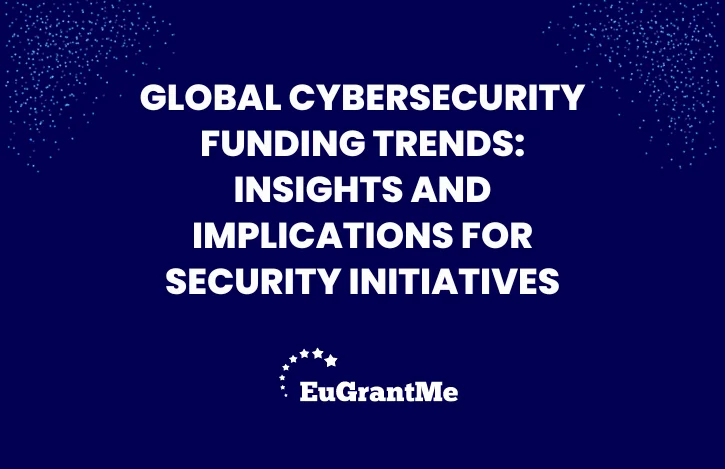In an era where cyber threats are escalating in both frequency and sophistication, understanding global cybersecurity funding trends is crucial for developing effective security initiatives. The investment landscape for cybersecurity is rapidly evolving, driven by the increasing need to protect sensitive data, critical infrastructure, and digital assets from malicious attacks. This article delves into the current trends in cybersecurity funding and explores their implications for organisations aiming to bolster their security measures.
Rising Investment in Cybersecurity
The global cybersecurity market has witnessed substantial growth in recent years, with investments pouring in from both the public and private sectors. This surge is largely due to the proliferation of cyber-attacks targeting businesses, government entities, and individuals. As the digital transformation accelerates across industries, the demand for robust cybersecurity solutions has never been higher.
Investors are increasingly recognising the importance of cybersecurity, leading to significant funding for innovative start-ups and established companies alike. Venture capital firms and private equity investors are actively seeking opportunities in the cybersecurity space, driven by the potential for high returns and the critical need for advanced security technologies. This influx of capital is fostering innovation, leading to the development of cutting-edge solutions designed to combat emerging threats.
Government Initiatives and Funding
Governments around the world are playing a pivotal role in shaping cybersecurity funding trends. Recognising the strategic importance of cybersecurity for national security and economic stability, many governments have launched extensive funding programmes and initiatives. These efforts are aimed at enhancing the cybersecurity capabilities of public institutions, critical infrastructure, and private enterprises.
In the United States, for instance, the government has significantly increased its cybersecurity budget, allocating billions of dollars to various initiatives aimed at strengthening national defences. Similarly, the European Union has launched the European Cybersecurity Competence Centre and Network, which focuses on boosting cybersecurity research, innovation, and industrial capabilities across member states. These government-driven funding initiatives are crucial for addressing the growing cyber threat landscape and ensuring the resilience of national infrastructures.
Corporate Spending and Strategic Priorities
Corporate spending on cybersecurity is also on the rise, with businesses across sectors recognising the critical importance of safeguarding their digital assets. The increasing frequency and severity of cyber-attacks have compelled organisations to prioritise cybersecurity investments as a core component of their strategic planning.
Large enterprises are allocating substantial portions of their IT budgets to cybersecurity, focusing on areas such as threat detection, incident response, and employee training. The adoption of advanced technologies, such as artificial intelligence (AI) and machine learning (ML), is a key trend, as these technologies offer enhanced capabilities for identifying and mitigating cyber threats in real-time. Additionally, cloud security and endpoint protection have emerged as top priorities, given the widespread adoption of remote work and cloud computing.
Emerging Technologies and Innovation
The cybersecurity landscape is constantly evolving, driven by the development of new technologies and innovative approaches. One of the significant trends in cybersecurity funding is the emphasis on emerging technologies that can provide more effective and efficient security solutions. AI and ML are at the forefront of this trend, offering powerful tools for threat intelligence, anomaly detection, and automated response.
Blockchain technology is another area attracting significant investment. Its potential to enhance data integrity, ensure secure transactions, and provide tamper-proof records makes it a valuable asset in the cybersecurity arsenal. Moreover, the rise of quantum computing is prompting increased funding in quantum-safe cryptography, as traditional encryption methods may become vulnerable in the face of quantum attacks.
Challenges and Opportunities
While the surge in cybersecurity funding presents numerous opportunities for innovation and enhanced security, it also brings challenges that need to be addressed. One of the primary challenges is the cybersecurity talent gap. The rapid growth of the cybersecurity sector has outpaced the availability of skilled professionals, leading to a significant shortage of talent. Addressing this gap requires concerted efforts from governments, educational institutions, and the private sector to develop and nurture cybersecurity expertise.
Another challenge is the complexity of integrating new technologies into existing security infrastructures. Organisations must ensure that their cybersecurity investments are effectively integrated and aligned with their overall security strategies. This requires careful planning, robust implementation, and continuous monitoring to maximise the benefits of new technologies.
Future Directions and Strategic Implications
Looking ahead, the global cybersecurity funding landscape is poised to continue its upward trajectory. The increasing digitisation of industries, coupled with the escalating threat landscape, will drive sustained investment in cybersecurity. Organisations must stay abreast of funding trends and emerging technologies to effectively protect their digital assets and maintain a competitive edge.
Strategically, organisations should adopt a proactive approach to cybersecurity, leveraging the latest innovations and best practices. This includes investing in advanced threat detection and response capabilities, fostering a culture of security awareness, and continuously evaluating and updating security measures. Collaboration between the public and private sectors will also be crucial, as shared intelligence and resources can enhance collective defences against cyber threats.
Last Words
Global cybersecurity funding trends highlight the critical importance of investing in robust security measures to combat the ever-evolving threat landscape. With substantial investments from governments, private sector players, and venture capitalists, the cybersecurity sector is witnessing unprecedented growth and innovation. However, challenges such as the talent gap and integration complexities must be addressed to fully realise the benefits of these investments.
By understanding and adapting to these trends, organisations can develop effective security initiatives that safeguard their digital assets and ensure resilience in the face of cyber threats. The future of cybersecurity depends on continuous innovation, strategic planning, and collaboration, paving the way for a more secure digital world.
At EuGrantMe, we are passionate about fostering innovation and empowering ambitious minds to flourish. Our mission revolves around providing top-notch grant writing services for the EIC Accelerator and Horizon grants in Europe, enabling our customers to unlock the full potential of their ground-breaking ideas.
Do you have a project to turn into reality?
Contact us!


